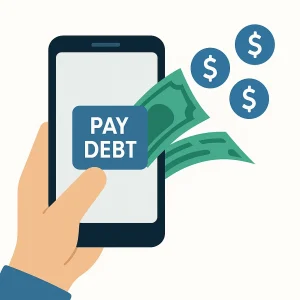Debt collection has traditionally been viewed as a cumbersome and often stressful process. However, the advent of mobile payment solutions has revolutionized the industry, offering both debtors and creditors a seamless and efficient method to manage debt repayment.
Why Mobile Payments Are Changing Debt Collection
In recent years, mobile payment platforms have become widely adopted across multiple industries due to their convenience, speed, and accessibility. For debt collection specifically, these platforms significantly enhance repayment rates and reduce the friction that often comes with traditional collection methods like mailed checks or phone-based payments.
Benefits of Mobile Payments in Debt Collection
- Increased Convenience: Mobile payments eliminate the need for physical checks or bank visits. Debtors can settle debts instantly from anywhere.
- Faster Collection Rates: Immediate payment options significantly shorten the collection cycle, improving cash flow for businesses.
- Enhanced Security: Mobile payments typically incorporate advanced encryption and authentication methods, ensuring safer transactions and protecting sensitive debtor information.
- Reduced Operational Costs: Digital payments lower administrative overhead, as they require less manual intervention compared to traditional methods.
Real-World Examples of Mobile Payments in Action
- Venmo & PayPal: Widely used by individuals for personal transactions, these platforms have increasingly been integrated into debt repayment processes due to their widespread acceptance and ease of use.
- Square and Stripe: Popular among small businesses, these solutions facilitate secure credit and debit card transactions via smartphones, streamlining the debt collection process.
- Zelle: Directly linked to U.S. bank accounts, Zelle enables instant fund transfers, making it highly effective for quick debt settlements without transaction fees.
Overcoming Resistance to Mobile Payments
Despite clear advantages, resistance to adopting mobile payment solutions remains among some consumers and businesses. Concerns typically involve security and technology apprehension. Debt collectors can address these issues by clearly communicating security measures and providing simple step-by-step guidance on using mobile platforms.
The Future of Mobile Payments in Debt Collection
As digital transformation accelerates, mobile payments will increasingly dominate the debt collection landscape. Innovations such as automated payment reminders, AI-driven repayment plans, and integration with broader financial management tools will further streamline collections.
Debt collection agencies that proactively adopt mobile payment solutions will not only improve their recovery rates but also significantly enhance debtor satisfaction and compliance.
In conclusion, the integration of mobile payment solutions into debt collection processes is not merely beneficial—it’s rapidly becoming essential. Agencies that stay ahead in embracing these technologies will likely gain a significant competitive edge in the evolving financial landscape.
